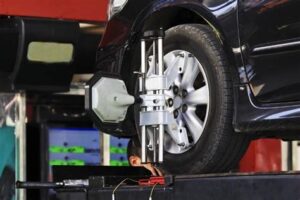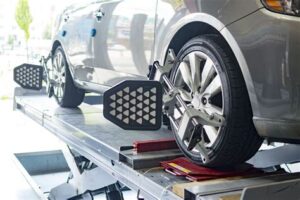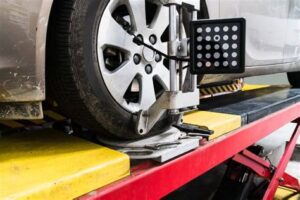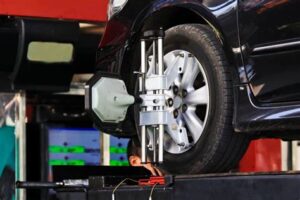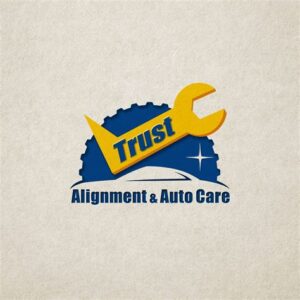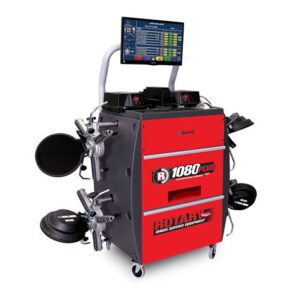Is your car exhibiting unsettling shakes even after getting a professional alignment? You’re not alone. Many drivers experience this frustrating issue, which can compromise both comfort and safety on the road. In this article, we delve into the common causes of post-alignment car shakes, helping you understand why your vehicle might be misbehaving. From diagnosing symptoms to practical solutions and preventive tips, we’ve got you covered. We’ll explore the intricacies of alignment and what you can do to keep your car running smoothly. Discover how to tackle those vibrations effectively and enhance your driving experience, ensuring every journey is a pleasant one. Let’s get started on your path to a smoother ride!
Understanding Why Your Car Shakes After Alignment
When you experience car shakes after an alignment, it can be alarming and frustrating. It’s essential to understand that a proper alignment should enhance your vehicle’s stability, but certain factors might negate these benefits. Here are some reasons why your car may shake following an alignment:
| Reason | Description |
|---|---|
| Improper Wheel Balance | After an alignment, if the wheels are not correctly balanced, it can lead to vibrations and shaking at various speeds. |
| Worn Components | Parts such as tie rods, ball joints, or bushings can wear over time. If these are damaged or not aligned correctly, they can cause the car shakes after an alignment. |
| Tire Issues | Uneven tire wear, incorrect tire pressure, or damaged tires can result in vibrations, which may be mistaken for alignment issues. |
| Suspension Problems | Any issues with the suspension system—such as shocks and struts not functioning properly—can also lead to instability and shaking post-alignment. |
Understanding these reasons can help you identify the best steps to take if you notice car shakes after alignment. It’s crucial to have a comprehensive inspection carried out by a qualified technician to address any potential contributors to the problem promptly.
Common Causes of Post-Alignment Car Shakes
If your car shakes after the alignment, it can be distressing and potentially dangerous. Understanding the common causes of this issue can help you take the necessary steps to correct it effectively. Here are some of the primary reasons that might explain why your car shakes after alignment:
- Uneven Tire Wear: If your tires are unevenly worn, it can lead to vibrations and shaking after an alignment. This often occurs if your car was misaligned for an extended period before getting serviced.
- Worn Suspension Components: The alignment process involves adjustments to your suspension system. If any parts are worn out, such as bushings or control arms, it can cause your car to shake after alignment.
- Improperly Balanced Tires: Even after a precise alignment, if your tires are not balanced correctly, it can lead to vibrations at certain speeds, making the car shake.
- Brake Issues: Sometimes, shaking may not be solely due to alignment problems. Warp or damaged brake rotors can also cause your vehicle to vibrate, particularly when braking.
- Loose or Damaged Wheel Bearings: Wheel bearings are critical for smooth wheel rotation. Damaged or loose bearings can lead to significant shaking, especially after alignment.
- Steering System Problems: Issues with the steering system, such as loose tie rods or worn steering rack components, can also result in a shaky ride after an alignment.
- Faulty Alignment Equipment: Occasionally, the alignment technician may use faulty equipment or fail to calibrate it properly. This can result in an inaccurate alignment, leading to shaking.
Identifying the specific cause of the shaking can help resolve the problem more efficiently, ensuring your car shakes less and operates smoothly.
Diagnosing Car Shakes: Symptoms and Signs
When your vehicle experiences car shakes after an alignment, it’s essential to pinpoint the symptoms and signs that can help diagnose the issue. Understanding these symptoms can aid not only in identifying the problem but also in ensuring that necessary repairs are addressed promptly.
Here are some common symptoms to watch out for:
- Vibration in the Steering Wheel: One of the most noticeable signs of car shakes is a vibrating steering wheel, especially at certain speeds. This indicates a potential misalignment or other underlying issues.
- Shaking of the Vehicle: If you feel the entire car shaking rather than just the steering wheel, it could indicate issues with the wheels, tires, or suspension.
- Uneven Tire Wear: Inspect your tires for any signs of uneven wear. This can be a telltale sign that your vehicle is misaligned, leading to car shakes.
- Drifting or Pulling: If your car tends to drift to one side when you’re attempting to drive straight, it may be a symptom of poor alignment, contributing to the overall shaking.
- Noise While Driving: Unusual sounds coming from your car while it shakes can also be a symptom of an underlying issue, such as unbalanced tires or suspension problems.
By closely monitoring these symptoms and taking action as necessary, you can effectively address the issues causing your car to shake after alignment.
How to Fix Car Shakes After Alignment
If your car shakes after alignment, it’s crucial to address the issue promptly to ensure your safety on the road. Here are some effective steps to fix car shakes post-alignment:
- Double-Check the Alignment: Sometimes, the alignment may not have been done correctly. Return to the shop where the service was performed and ask them to recheck the alignment settings.
- Inspect the Tires: Uneven tire wear or incorrect tire pressure can cause car shakes. Ensure that all tires are inflated to the manufacturer’s recommendations and have even tread wear. Rotate or replace tires as necessary.
- Check Wheel Balancing: If the wheels are not balanced correctly, it can lead to vibrations. Have a professional check and balance your wheels again, particularly if new tires were installed during alignment.
- Examine Suspension Components: Worn or damaged suspension parts can contribute to shaking. Inspect shocks, struts, and other suspension components for wear and replace them if necessary.
- Brake Inspection: Sometimes, the brakes can cause vibrations. Check for warped brake rotors or issues with the braking system. Address any brake problems to prevent further shaking.
- Look for Loose Parts: Inspect your vehicle for any loose bolts or components in the steering and suspension system. Tightening these components can significantly reduce or eliminate vibrations.
Following these steps will help diagnose and resolve the issue of your vehicle shaking after alignment. If the problem persists, it may be wise to consult a professional mechanic to conduct a thorough analysis.
Preventing Future Car Shakes: Tips and Maintenance
To avoid experiencing car shakes after alignment, staying proactive with your vehicle’s maintenance is essential. Here are some practical tips and strategies you can implement to help prevent future shaking:
- Regular Wheel Alignment: Schedule a wheel alignment every 6,000 miles or as recommended by your vehicle’s manufacturer to ensure proper alignment and reduce the chances of premature wear on tires.
- Periodic Tire Rotation: Rotate your tires every 5,000 to 8,000 miles to promote even wear and maintain balance. Uneven tire wear can lead to vibrations while driving.
- Check Tire Pressure: Keep your tires properly inflated according to the manufacturer’s specifications. Under-inflated or over-inflated tires can cause handling issues and result in car shakes.
- Inspect Suspension Components: Regularly inspect your suspension system, including shocks, struts, and bushings, for wear and tear. Damaged suspension components can lead to poor alignment and instability.
- Avoid Potholes and Road Hazards: Try to avoid driving over potholes and road debris as these can misalign your wheels and damage your suspension system, leading to potential shaking issues.
- Keep Your Wheels Balanced: After tire installation or rotation, ensure that your wheels are balanced. Imbalanced wheels can cause vibrations which may lead to car shakes over time.
- Listen to Your Vehicle: Pay attention to any unusual noises or changes in your vehicle’s handling. Early detection of issues can help you address potential problems before they escalate.
By following these maintenance tips, you can significantly reduce the likelihood of encountering car shakes after alignment. Keeping your vehicle in good condition not only enhances your driving experience but also ensures safety on the road.
Frequently Asked Questions
What are the common causes of a car shaking after an alignment?
Common causes of a car shaking after an alignment include imbalanced tires, worn suspension components, misaligned wheels post-service, or issues with the brakes.
How can I determine if my tires are causing the shake?
You can inspect your tires for uneven wear patterns or check if they are balanced properly. Additionally, a simple visual inspection can help identify any bulges or damage.
Is it normal for a car to shake right after an alignment?
No, it is not normal for a car to shake after an alignment. If the shaking persists, it indicates that further investigation is needed.
What should I do if my car shakes after getting an alignment?
If your car shakes after an alignment, it’s best to return to the service provider to have them check the alignment and other related components to ensure everything is functioning correctly.
Can loose or damaged suspension components cause shaking?
Yes, loose or damaged suspension components such as ball joints, bushings, or tie rods can lead to shaking and should be inspected by a mechanic.
How often should I get a wheel alignment?
It is generally recommended to get a wheel alignment every 6,000 to 10,000 miles or whenever you notice a change in handling, unusual tire wear, or after hitting a significant curb or pothole.
Does having the right tire pressure affect shaking?
Yes, maintaining the correct tire pressure is crucial as both under-inflated and over-inflated tires can lead to poor handling and vibrations while driving.
